I need running VoucherNo concatenation just like running balance or total.. Concatenate the previous VoucherNo to current VoucherNo row wise just like shown in picture

Query is:
select
v.VoucherDate,v.VoucherNo,v.VoucherType,v.Narration,SUM(v.Debit) Debit , SUM(v.Credit) Credit,dbo.GetBalance(v.CompanyProfileId,v.AccountCode,v.VoucherDate ,SUM(v.Debit), SUM(v.Credit)) Balance
from AcVoucher v
where v.VoucherDate Between '2016-03-24' and '2016-03-30' and v.CompanyProfileId = 2 and v.AccountCode = '05010001'
group by v.VoucherNo,v.VoucherDate,v.VoucherType,v.Narration,v.CompanyProfileId,v.AccountCode
Schema :
GO
/****** Object: Table [dbo].[AcVoucher] Script Date: 03/30/2016 3:47:02 PM ******/
SET ANSI_NULLS ON
GO
SET QUOTED_IDENTIFIER ON
GO
CREATE TABLE [dbo].[AcVoucher](
[Id] [bigint] IDENTITY(1,1) NOT NULL,
[CompanyProfileId] [int] NOT NULL,
[AccountCode] [nvarchar](50) NOT NULL,
[VoucherNo] [bigint] NOT NULL,
[VoucherType] [nvarchar](5) NOT NULL,
[VoucherDate] [datetime] NOT NULL,
[Narration] [nvarchar](500) NULL,
[Debit] [float] NOT NULL,
[Credit] [float] NOT NULL,
[TaxPercentage] [float] NULL,
[DiscountPercentage] [float] NULL,
[CreatedBy] [int] NULL,
[CreatedDate] [datetime] NULL,
CONSTRAINT [PK_ACVoucher_1] PRIMARY KEY CLUSTERED
(
[Id] ASC
)WITH (PAD_INDEX = OFF, STATISTICS_NORECOMPUTE = OFF, IGNORE_DUP_KEY = OFF, ALLOW_ROW_LOCKS = ON, ALLOW_PAGE_LOCKS = ON) ON [PRIMARY]
) ON [PRIMARY]
GO